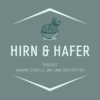What is meant by „5 a day“ ?
Fruit and veg are the most promising source for vitamins and minerals, fibre and further active plant ingredients such as antioxidants. With 5 servings per day (approx.. 600g) you get an adequate amount of these nutrients. A good variety in your choices (make sure you cover every colour), fresh and freshly prepared foods is vital to cover all your needs.
How much fruit & veg is one serving?
One serving equals the volume of your clenched fist.
For kids this is about 70 g of veggies or 100 g of fruit (= 510 g/day), adults should be consuming 120 g of fruit & veg (= 600 g/day). This is only the edible part, after peeling etc.
What’s better: raw or cooked?
A healthy diet includes both, raw and cooked fruit and veg. There some loss of vitamins duet to heat in the cooking process (e.g. vitamin C or folic acid). On the other hand, steaming or cooking your veggies increases the bio availability of other active ingredients (e.g. beta carotene or lycopene).
Raw is essential to cover your need of heat-sensitive vitamins, hence it’s recommended to consume 1 serving of your daily 5’s raw.
What about frozen fruit or veg?
Nowadays you’ll find plenty of fruit and veg in the frozen food aisle in your grocery store. Technology in the production process of frozen food is quite amazing. It takes only a couple of minutes from harvesting to freezing. This assures that the fruit and veg is super fresh and full of valuable nutrients – often better than what you find in the fresh produce section. Careful though: much of the frozen products contain sauces and spice blends that have no only favourable ingredients. Make sure to buy only natural „no-nonsense“ ones.
Reference: (5 a day, SGE, BLV):
- Orzeł, D., Kosendiak, A., & Bronkowska, M. (2018). Comparison of vegetables and fruit consumption frequency by athletes before and after marathon. Roczniki Panstwowego Zakladu Higieny, 69(3), 267–272
- Burkhart, S. J., & Pelly, F. E. (2016). Dietary Intake of Athletes Seeking Nutrition Advice at a Major International Competition. Nutrients, 8(10), 638. https://doi.org/10.3390/nu8100638
- Pelly, F. E., & Thurecht, R. (2019). Evaluation of Athletes Food Choices during Competition with Use of Digital Images. Nutrients, 11(7), 1627. https://doi.org/10.3390/nu11071627




